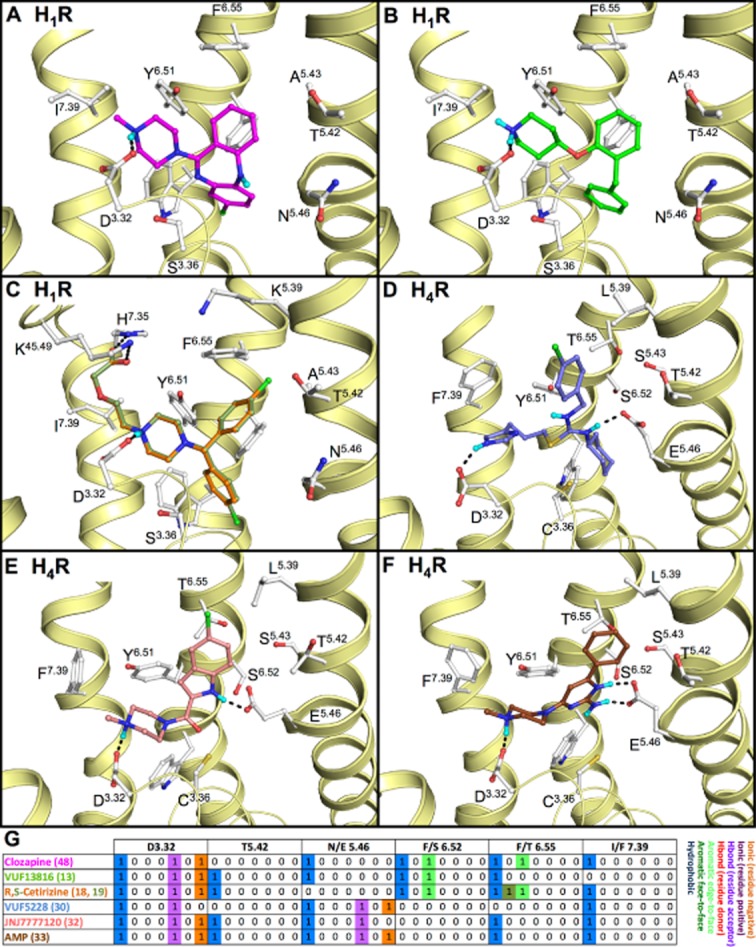Figure 4.

Proposed binding modes, based on SAR and SDM studies, of (A) clozapine (48) (magenta carbon atoms) in human H1R, (B) SBVS hit VUF13816 (13) (de Graaf et al., 2011) (green carbon atoms) in human H1R, (C) R-cetirizine (18) (green carbon atoms) and S-cetirizine (19) (orange carbon atoms) in human H1R, (D) VUF5228 (30) (blue carbon atoms) in a human H4R homology model (Istyastono et al., 2011b), (E) JNJ7777120 (32) (red carbon atoms) and (F) aminopyrimidine 33 (brown carbon atoms) (Schultes et al., 2012). Rendering and colour-coding are the same as in Figure 2. H4R homology models were build using the H1R (E, F) and β2AR (D) crystal structures as templates. (G) Molecular interaction fingerprint (IFP) bit strings describing the binding poses of 48, 13, 18, 19, 30, 32, 33 (A–F), encoding different interaction types with D3.32, 5.42, 5.46, 6.52, 6.55 and 7.39 (colour-coding as described in Figure 2). 2D structures of the molecules are presented in Figure 3B.
